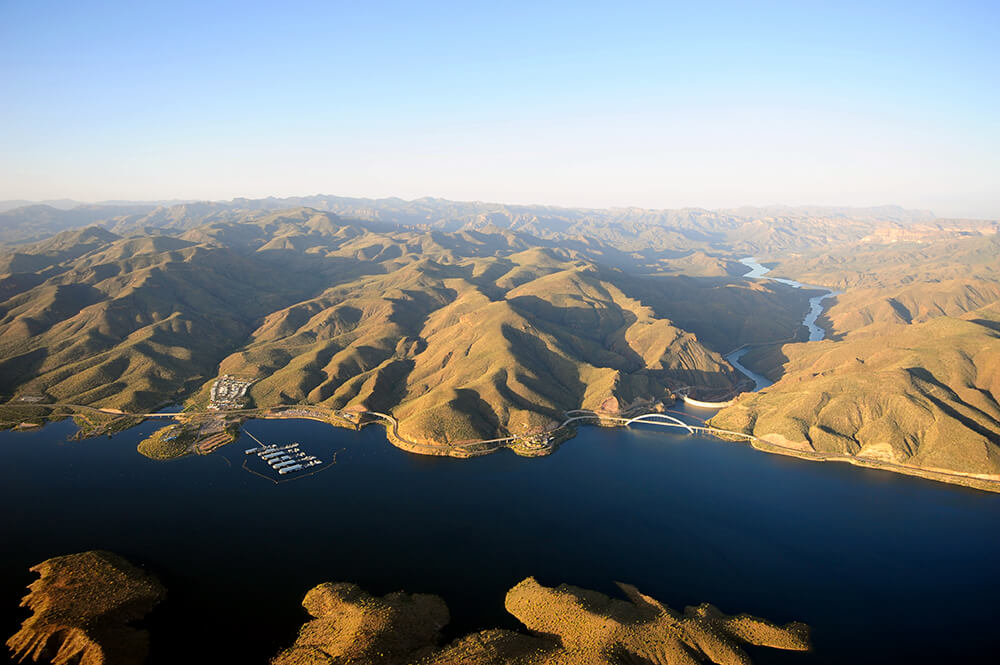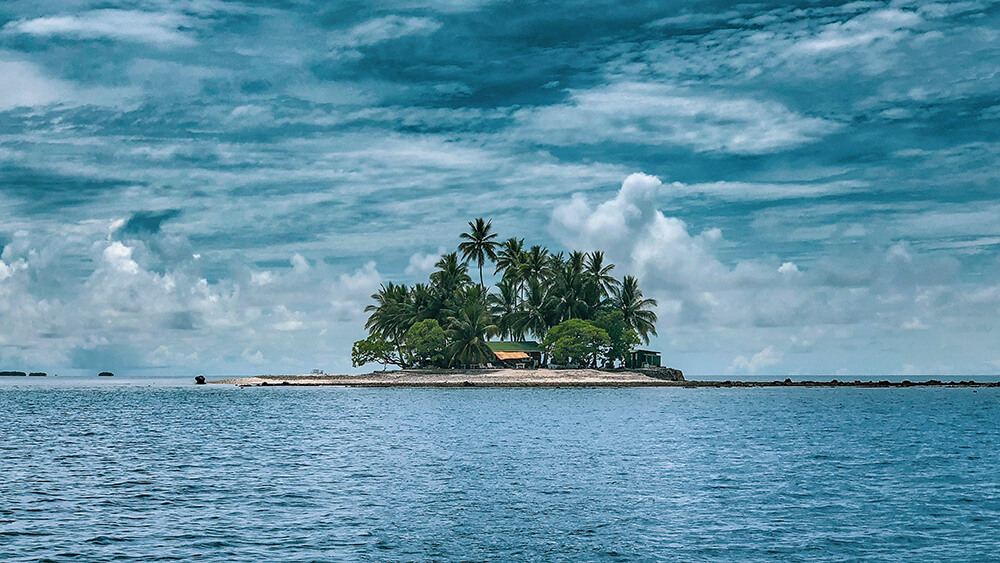
By David M. Brown.
“Climate change creates new risks and exacerbates existing vulnerabilities in communities across the United States, presenting growing challenges to human health and safety, quality of life, and the rate of economic growth.”
–Fourth National Climate Assessment, November 2018
Climate Change Changes All of Us
In New York City, Mayor Bill de Blasio proposes extending the $10 billion South Street Seaport project by two city blocks into the East River at the lowest-lying area of Manhattan. The land would primarily protect infrastructure such as subway line tunnels from flooding.
Along the Eastern seaboard, “sunny day flooding” in coastal Charleston and Miami breaches sea walls into city streets about 20 to 30 times annually. Near Nebraska’s Offutt Air Force Base in March, the flooding Missouri River inundated 80 buildings.
With glaciers melting in the Arctic, land mass that previously reflected heat from the Earth is reduced and sea level rises.
In Brazil, denuded rainforest intensifies ecological imbalance, affecting temperatures and changing precipitation patterns.

Coral reefs continue dying around the world. On the low-lying Marshall Islands, near Australia, residents report corpses being washed away from their graves because of flooding. On islands worldwide, inhabitants plan Noah-like evacuations as their homelands are threatened with extinction. They fear becoming climate refugees.
And, in the desert Southwest, peaking summer temperatures have canceled small-jet takeoffs as tarmacs fail to provide the air density required for safe ascent. Will large commercial jets be grounded next – and the multibillion-dollar tourism economies of states such as Arizona threatened?
“The latest reports from the hundreds of distinguished scientists who contribute to the Intergovernmental Panel on Climate Change and to the U.S. National Climate Assessment conclude with high confidence that the Earth has warmed by about 1 degree Centigrade (1.8 degrees Fahrenheit) over the last century and that human activities, especially emissions of greenhouse gases, are responsible,” says Diana Liverman, Regents’ Professor in the School of Geography and Development at the University of Arizona.
Warming Up the Greenhouse
The greenhouse effect occurs when the natural balance between the Earth’s retaining solar energy and reflecting it is altered; temperatures increase, sea levels rise and heavy rainfall events occur more frequently, including storms as intense as hurricanes.
The National Oceanic and Atmospheric Administration (NOAA) National Centers for Environmental Information (NCEI) is the world’s largest archive of weather and climate information. Global data from millions of years are archived and used to describe the climate of the U.S. and the world, including how it has changed during the last century.
Climate refers to long-term averages of various measurements such as temperature, precipitation and air pressure. “Climate change refers to changes in the long-term average values,” explains David R. Easterling, Ph.D., a climate scientist at NOAA/NCEI in Asheville, North Carolina. Easterling directs the National Climate Assessment Technical Support Unit in the Center for Weather and Climate at NOAA, a part of the U.S. Department of Commerce.
Long-term climate changes, occurring across thousands of years, depend on Earth/sun relations; these change the distribution of the solar energy onto the planet’s surface. For example, ice ages and interglacials, such as the one we are living in, result from Milankovitch Cycles. These are changes in the tilt of the Earth’s axis of rotation, from about 20 degrees to 24 degrees; how circular or elliptical our solar orbit is; and in what heavenly direction the axis points, such as currently toward the North Star.
Climate change during the last and this century, however, is caused by human activities including burning fossil fuels that emit carbon dioxide, methane and other greenhouse gases into the atmosphere. Land-use change such as deforestation and the use of aerosols intensify the greenhouse effect. Ozone is another factor.

The Earth’s climate continues a long-term warming trend from increases in greenhouse gases. The past four years (2015–2018) are the warmest since meteorological records started about 1880, Easterling says.
Year-to-year natural variability also occurs in response to events such as volcanic eruptions; these inject large amounts of aerosols into the atmosphere, slightly cooling the climate for about two years. “Because of this natural variability, each year is not always warmer than the previous year, but the long-term trend is warming,” he explains.
“These changes can be very rapid and are much more of an issue since the human civilization and the natural environment are tuned to the current climate,” he adds. “The climate changes in response to forcing factors, and there are no natural forcing factors that work on time scales such as the last 100 years and coming 100 years.”
Easterling is an editor of and contributor to the 2018 Fourth National Climate Assessment (NCA4). Mandated by the Global Change Research Act of 1990 and developed by the U.S. Global Change Research Program (USGCRP), NCA4 documents climate knowledge, impacts and trends across the U.S. to inform policy-making and build adaptation and resilience activities. Approximately 300 authors and 13 federal agencies participated in the 1,600-page study, which discusses climate change issues such as health, economic performance, safety, transportation and infrastructure, food production and distribution, national security and military planning and disaster risk management. (science2017.globalchange.gov and nca2018.globalchange.gov.)
The Weather Tolls for Thee
In a February 2016 article for weather.com, James Crugnale identified “The 9 Most Endangered Islands in the World.” These islands and atolls are meters or less above sea level, and some are imminently at risk. They are Antigua and Nevis in the Caribbean Sea; the Maldives in the Indian Ocean; and, in the Pacific Ocean, the Marshall Islands, Kiribati, Tuvalu, Tonga, the Federated States of Micronesia and the Cook Islands.

Off the northeast coast of New Zealand, the 15 Cook Islands are variously threatened by sea level rise, causing coastal erosion; invasive pests, diseases and plants; increased drought and flooding events; coral bleaching; ocean acidification; and reduced food and water security because of salinization of groundwater and droughts, explains John Hay, an adjunct professor at the University of the South Pacific campus on Rarotonga, the capital island, where he lives.

Diseases like dengue, zika, chikungunya and other arboviruses are transmitted to humans through the bites of infected Aedes mosquitoes, the primary vector in the Pacific islands. While these diseases are not endemic to the Cook Islands, they arrive through tourism, and hotter, more humid and rainy weather favors the insects’ propagation, he explains. The government is working to identify and treat mosquito breeding sites, but a current outbreak of dengue threatens the tourism-centric economy: “A major outbreak of disease would decimate this industry overnight. The risks are real and high.”
A signatory to many international and regional agreements, the Cook Islands is working to reduce greenhouse gas emissions, in particular, converting fossil-fuel generated electricity to solar energy. A goal of 100-percent renewable power by 2020 has been set. This is achievable – Costa Rica, for example, is reportedly at 99 percent of renewable energy sources.
The danger is every day. “We are not talking about possible effects in the future,” Hay says. “The effects are apparent now.”
In Arizona’s Backyard
The National Climate Assessment provides regional reports, too. For the Southwest, the possibilities include drought, reduced surface water to supply a growing population, reduction in agricultural yields, and the impact on rural economies, insect outbreaks, wildfires and disruptions to urban electricity, resulting in higher energy costs.
Tourism, a $22 billion industry in Arizona, could also suffer. “Our travel brand is synonymous with natural beauty, freedom and outdoor living. So Arizonans who care about the long-term health of the state’s economy should also care about preserving the experience visitors currently enjoy here, especially as it relates to our parks and other public lands,” says Debbie Johnson, director, Arizona Office of Tourism. “That means being conscientious about water supply, wildfires, air quality, light pollution and other environmental factors that have the potential to negatively impact tourism.”
That conscientiousness must extend from individuals through businesses, utilities and government. The Tempe-based not-for-profit water and power utility, Salt River Project (SRP), plans to store another million acre-feet of water for future use, adding to the current storage of a million acre-feet of water underground as part of its 2035 sustainability goals, says Jeff Lane, SRP media relations.
The company is the largest provider of electricity in the greater Phoenix metropolitan area, serving more than one million customers, and the largest supplier of water, delivering about 800,000 acre-feet annually to municipal, urban and agricultural water users.
“As a community-based leader, SRP is committed to helping our customers achieve their clean-energy goals and reduce the risks of climate change on Arizona communities and our region,” says Kathleen Mascareñas, SRP media relations. “We will significantly and steadily reduce greenhouse gas (GHG) emissions while maintaining a sustainable, reliable and affordable supply of power and water.”
Think globally, act locally was an early mantra of the environmental movement. “Our responsibility is to reduce greenhouse gas emissions by reducing the burning of fossil fuels,” Easterling says. “Everyone must do their part.”
Regardless, the Earth will remain. But our choices will impact the kind of life we live here.
“As a fast-growing desert community, we have a responsibility to combat climate change and take action to reverse its effects. Rising temperatures threaten to further stress the Colorado River and our water supplies, impose prolonged drought and fuel more dangerous wildfires,” says Rep. Greg Stanton, D, Ariz. 9, who formerly served as a councilman and mayor of Phoenix.

During his mayoral tenure, the country’s fifth most populous city invested in 32 megawatts of solar energy projects, expanded public transportation options and planted thousands of trees to improve air quality and increase shade, Stanton says. “We set ambitious goals to become a zero-waste, carbon-neutral city by 2050. We’ll get there by working together.”
David M. Brown is a Valley-based writer (azwriter.com).





